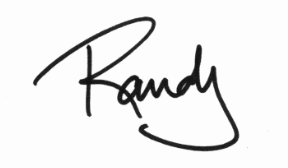התחל במצב לא מקוון עם האפליקציה Player FM !
Trying To Fix A Dead Horse
Manage episode 496263945 series 2155250

I know, I’ve been a dog on a bone with this. Some might say, “You’re beating a dead horse!” Maybe. And maybe that’s the method to my madness in the past few episodes.
Do you know about the dead horse theory?
It’s had a long-standing place in management lore. It goes like this, according to the Internet.
The “Dead Horse Theory” is a satirical metaphor that illustrates how some individuals, institutions, or nations handle obvious, unsolvable problems. Instead of accepting reality, they cling to justifying their actions.
The core idea is simple: if you realize you’re riding a dead horse, the most sensible thing to do is dismount and move on.
However, in practice, the opposite often happens. Instead of abandoning the dead horse, people take actions such as:
• Buying a new saddle for the horse.
• Improving the horse’s diet, despite it being dead.
• Changing the rider instead of addressing the real problem.
• Firing the horse caretaker and hiring someone new, hoping for a different outcome.
• Holding meetings to discuss ways to increase the dead horse’s speed.
• Creating committees or task forces to analyze the dead horse problem from every angle. These groups work for months, compile reports, and ultimately conclude the obvious: the horse is dead.
• Justifying efforts by comparing the horse to other similarly dead horses, concluding that the issue was a lack of training.
• Proposing training programs for the horse, which means increasing the budget.
• Redefining the concept of “dead” to convince themselves the horse still has potential.
The Lesson:
This theory highlights how many people and organizations prefer to deny reality, wasting time, resources, and effort on ineffective solutions instead of acknowledging the problem from the start and making smarter, more effective decisions.
Today, let’s aim it at ourselves. Personally. Professionally. I encourage you to take it personally. Make it personal. Apply it. Learn from it. And lean toward wisdom.

Please tell a friend about the podcast!
100 פרקים
Manage episode 496263945 series 2155250

I know, I’ve been a dog on a bone with this. Some might say, “You’re beating a dead horse!” Maybe. And maybe that’s the method to my madness in the past few episodes.
Do you know about the dead horse theory?
It’s had a long-standing place in management lore. It goes like this, according to the Internet.
The “Dead Horse Theory” is a satirical metaphor that illustrates how some individuals, institutions, or nations handle obvious, unsolvable problems. Instead of accepting reality, they cling to justifying their actions.
The core idea is simple: if you realize you’re riding a dead horse, the most sensible thing to do is dismount and move on.
However, in practice, the opposite often happens. Instead of abandoning the dead horse, people take actions such as:
• Buying a new saddle for the horse.
• Improving the horse’s diet, despite it being dead.
• Changing the rider instead of addressing the real problem.
• Firing the horse caretaker and hiring someone new, hoping for a different outcome.
• Holding meetings to discuss ways to increase the dead horse’s speed.
• Creating committees or task forces to analyze the dead horse problem from every angle. These groups work for months, compile reports, and ultimately conclude the obvious: the horse is dead.
• Justifying efforts by comparing the horse to other similarly dead horses, concluding that the issue was a lack of training.
• Proposing training programs for the horse, which means increasing the budget.
• Redefining the concept of “dead” to convince themselves the horse still has potential.
The Lesson:
This theory highlights how many people and organizations prefer to deny reality, wasting time, resources, and effort on ineffective solutions instead of acknowledging the problem from the start and making smarter, more effective decisions.
Today, let’s aim it at ourselves. Personally. Professionally. I encourage you to take it personally. Make it personal. Apply it. Learn from it. And lean toward wisdom.

Please tell a friend about the podcast!
100 פרקים
כל הפרקים
×ברוכים הבאים אל Player FM!
Player FM סורק את האינטרנט עבור פודקאסטים באיכות גבוהה בשבילכם כדי שתהנו מהם כרגע. זה יישום הפודקאסט הטוב ביותר והוא עובד על אנדרואיד, iPhone ואינטרנט. הירשמו לסנכרון מנויים במכשירים שונים.




